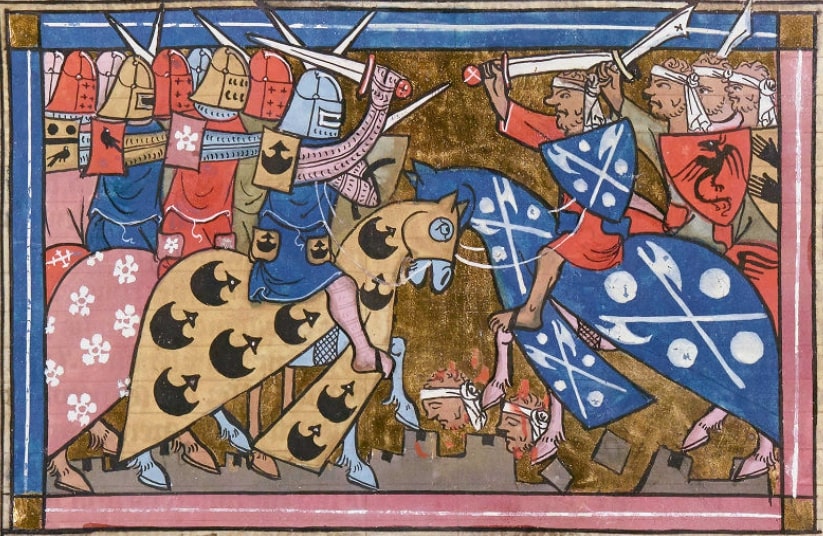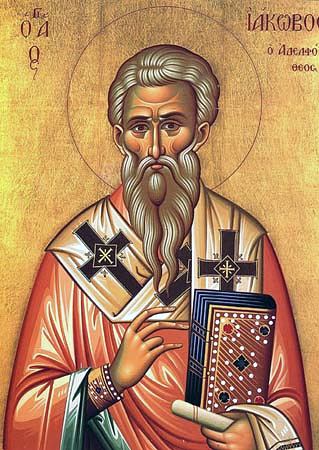|
Darkoush
Darkush ( ar, دَرْكُوش, Darkūš; also spelled Darkoush or Derkush) is a town in northern Syria, administratively part of the Idlib Governorate, located northwest of Idlib along the Syrian–Turkish borders on the Orontes River. Nearby localities include al-Janudiyah, Zarzur and al-Najiyah to the southwest, Jisr al-Shughur to the south and Millis and Maarrat Misrin to the east. According to the Syria Central Bureau of Statistics, Darkush had a population of 5,295 in the 2004 census.General Census of Population and Housing 2004 . Syria Central Bureau of Statistics (CBS). Idlib Governorate. The town is also the administrati ... [...More Info...] [...Related Items...] OR: [Wikipedia] [Google] [Baidu] |
Nahiya Darkush
Darkush Subdistrict ( ar, ناحية دركوش) is a Syrian ''nahiyah'' (subdistrict) located in Jisr al-Shughur District in Idlib ar, إدلبي, Idlibi , coordinates = , elevation_m = 500 , area_code = 23 , geocode = C3871 , blank_name = Climate , blank_info .... According to the Syria Central Bureau of Statistics (CBS), Darkush Subdistrict had a population of 23022 in the 2004 census. References Subdistricts of Idlib Governorate {{IdlibSY-geo-stub ... [...More Info...] [...Related Items...] OR: [Wikipedia] [Google] [Baidu] |
Jisr Al-Shughur District
Jisr ash-Shugur District ( ar-at, منطقة جسر الشغور, manṭiqat Ǧisr aš-Šuġūr) is a district of the Idlib Governorate in northwestern Syria. Administrative centre is the city of Jisr ash-Shugur. At the 2004 census, the district had a population of 150,193. Sub-districts The district of Jisr ash-Shugur is divided into four sub-districts or nawāḥī (population as of 2004): *Jisr al-Shughur Subdistrict (ناحية جسر الشغور): population 89,028. * Bidama Subdistrict (ناحية بداما): population 18,501. *Darkush Subdistrict (ناحية دركوش): population 23,022. *Al-Janudiyah Subdistrict Al-Janudiyah Subdistrict ( ar, ناحية الجانودية) is a Syrian ''nahiyah'' (subdistrict) located in Jisr al-Shughur District in Idlib ar, إدلبي, Idlibi , coordinates = , elevation_m = ... (ناحية الجانودية): population 19,642. References External links * {{IdlibS ... [...More Info...] [...Related Items...] OR: [Wikipedia] [Google] [Baidu] |
Countries Of The World
The following is a list providing an overview of sovereign states around the world with information on their status and recognition of their sovereignty. The 206 listed states can be divided into three categories based on membership within the United Nations System: 193 UN member states, 2 UN General Assembly non-member observer states, and 11 other states. The ''sovereignty dispute'' column indicates states having undisputed sovereignty (188 states, of which there are 187 UN member states and 1 UN General Assembly non-member observer state), states having disputed sovereignty (16 states, of which there are 6 UN member states, 1 UN General Assembly non-member observer state, and 9 de facto states), and states having a special political status (2 states, both in free association with New Zealand). Compiling a list such as this can be a complicated and controversial process, as there is no definition that is binding on all the members of the community of nations conc ... [...More Info...] [...Related Items...] OR: [Wikipedia] [Google] [Baidu] |
Millis, Syria
Milles ( ar, ملَس) is a village in northwestern Syria, administratively belonging to the Idlib Governorate. The village is 18 km from the city of Idlib, 120 km west of Aleppo, and is in between Idlib and Salqeen. Milles is near to Turkey and is located between two mountains. Baresh is the first and Alaly is the second. According to the Syria Central Bureau of Statistics, the town had a population of 2,938 in the 2004 census.General Census of Population and Housing 2004 . Syria Central Bureau of Statistics (CBS). Idlib Governorate. This village has a small hill covered by thousand of |
Tripoli, Lebanon
Tripoli ( ar, طرابلس/ALA-LC: ''Ṭarābulus'', Lebanese Arabic: ''Ṭrablus'') is the largest city in northern Lebanon and the second-largest city in the country. Situated north of the capital Beirut, it is the capital of the North Governorate and the Tripoli District, Lebanon, Tripoli District. Tripoli overlooks the eastern Mediterranean Sea, and it is the northernmost seaport in Lebanon. It holds a string of four small islands offshore. The Palm Islands Nature Reserve, Palm Islands were declared a protected area because of their status of haven for endangered loggerhead turtles (''Chelona mydas''), rare monk seals and migratory birds. Tripoli borders the city of El Mina, the port of the Tripoli District, which it is geographically conjoined with to form the greater Tripoli conurbation. The history of Tripoli dates back at least to the 14th century BCE. The city is well known for containing the Mansouri Great Mosque and the largest Crusader States, Crusader fortress in L ... [...More Info...] [...Related Items...] OR: [Wikipedia] [Google] [Baidu] |
Bohemond VI Of Antioch
Bohemond VI (–1275), also known as the Fair, was the prince of Antioch and count of Tripoli from 1251 until his death. He ruled while Antioch was caught between the warring Mongol Empire and Mamluk Sultanate. In 1268 Antioch was captured by the Mamluks, and he was thenceforth a prince in exile. He was succeeded by his son, Bohemond VII. Life Bohemond VI was the son of Bohemond V of Antioch and Lucienne of Segni, great-niece of Pope Innocent III. When Bohemond V died in January 1252, 15-year-old Bohemond VI succeeded under the regency of his mother. However, Lucienne never left Tripoli, and instead handed over the government of the principality to her relatives. This made her unpopular, so the young Bohemond VI, through the approval of King Louis IX of France, who was on Crusade at the time, gained permission from Pope Innocent IV to inherit the principality a few months early. Young Bohemond then travelled to Acre where he was knighted by King Louis, and took power in An ... [...More Info...] [...Related Items...] OR: [Wikipedia] [Google] [Baidu] |
Saladin
Yusuf ibn Ayyub ibn Shadi () ( – 4 March 1193), commonly known by the epithet Saladin,, ; ku, سهلاحهدین, ; was the founder of the Ayyubid dynasty. Hailing from an ethnic Kurdish family, he was the first of both Egypt and Syria. An important figure of the Third Crusade, he spearheaded the Muslim military effort against the Crusader states in the Levant. At the height of his power, Ayyubid territorial control spanned Egypt, Syria, Upper Mesopotamia, the Hejaz, Yemen, the Maghreb, and Nubia. Alongside his uncle Shirkuh, a military general of the Zengid dynasty, Saladin was sent to Egypt under the Fatimid Caliphate in 1164, on the orders of Nur ad-Din. With their original purpose being to help restore Shawar as the to the teenage Fatimid caliph al-Adid, a power struggle ensued between Shirkuh and Shawar after the latter was reinstated. Saladin, meanwhile, climbed the ranks of the Fatimid government by virtue of his military successes against Crusa ... [...More Info...] [...Related Items...] OR: [Wikipedia] [Google] [Baidu] |
Principality Of Antioch
The Principality of Antioch was one of the crusader states created during the First Crusade which included parts of modern-day Turkey and Syria. The principality was much smaller than the County of Edessa or the Kingdom of Jerusalem. It extended around the northeastern edge of the Mediterranean, bordering the County of Tripoli to the south, Edessa to the east, and the Byzantine Empire or the Kingdom of Armenia to the northwest, depending on the date. It had roughly 20,000 inhabitants in the 12th century, most of whom were Armenians and Greek Orthodox Christians, with a few Muslims outside the city itself. Most of the crusaders who settled there were of Norman origin, notably from the Norman Kingdom of southern Italy, as were the first rulers of the principality, who surrounded themselves with loyal subjects. Few of the inhabitants apart from the Crusaders were Roman Catholic even though the city was under the jurisdiction of the Latin Patriarchate of Antioch, establish ... [...More Info...] [...Related Items...] OR: [Wikipedia] [Google] [Baidu] |
Crusades
The Crusades were a series of religious wars initiated, supported, and sometimes directed by the Latin Church in the medieval period. The best known of these Crusades are those to the Holy Land in the period between 1095 and 1291 that were intended to recover Jerusalem and its surrounding area from Islamic rule. Beginning with the First Crusade, which resulted in the recovery of Jerusalem in 1099, dozens of Crusades were fought, providing a focal point of European history for centuries. In 1095, Pope Urban II proclaimed the First Crusade at the Council of Clermont. He encouraged military support for Byzantine emperor AlexiosI against the Seljuk Turks and called for an armed pilgrimage to Jerusalem. Across all social strata in western Europe, there was an enthusiastic response. The first Crusaders had a variety of motivations, including religious salvation, satisfying feudal obligations, opportunities for renown, and economic or political advantage. Later crusades were ... [...More Info...] [...Related Items...] OR: [Wikipedia] [Google] [Baidu] |
Christianization
Christianization ( or Christianisation) is to make Christian; to imbue with Christian principles; to become Christian. It can apply to the conversion of an individual, a practice, a place or a whole society. It began in the Roman Empire, continued through the Middle Ages in Europe, and in the twenty-first century has spread around the globe. Historically, there are four stages of Christianization beginning with individual conversion, followed by the translation of Christian texts into local vernacular language, establishing education and building schools, and finally, social reform that sometimes emerged naturally and sometimes included politics, government, coercion and even force through colonialism. The first countries to make Christianity their state religion were Armenia, Georgia, Ethiopia and Eritrea. In the fourth to fifth centuries, multiple tribes of Germanic barbarians converted to either Arian or orthodox Christianity. The Frankish empire begins during this same ... [...More Info...] [...Related Items...] OR: [Wikipedia] [Google] [Baidu] |
Shipwright
Shipbuilding is the construction of ships and other floating vessels. It normally takes place in a specialized facility known as a shipyard. Shipbuilders, also called shipwrights, follow a specialized occupation that traces its roots to before recorded history. Shipbuilding and ship repairs, both commercial and military, are referred to as " naval engineering". The construction of boats is a similar activity called boat building. The dismantling of ships is called ship breaking. History Pre-history The earliest known depictions (including paintings and models) of shallow-water sailing boats is from the 6th to 5th millennium BC of the Ubaid period of Mesopotamia. They were made from bundled reeds coated in bitumen and had bipod masts. They sailed in shallow coastal waters of the Persian Gulf. 4th millennium BC Ancient Egypt Evidence from Ancient Egypt shows that the early Egyptians knew how to assemble planks of wood into a ship hull as early as 3100 BC. Egyptia ... [...More Info...] [...Related Items...] OR: [Wikipedia] [Google] [Baidu] |
Roman Syria
Roman Syria was an early Roman province annexed to the Roman Republic in 64 BC by Pompey in the Third Mithridatic War following the defeat of Kingdom of Armenia (antiquity), King of Armenia Tigranes the Great. Following the partition of the Herodian Kingdom of Judea into Tetrarchy, tetrarchies in 6 AD, it was gradually absorbed into Roman provinces, with Roman Syria annexing Iturea and Trachonitis (tetrarchy), Iturea and Trachonitis. Provincia Syria Syria was annexed to the Roman Republic in 64 BC, when Pompey, Pompey the Great had the Seleucid Empire, Seleucid king Antiochus XIII Asiaticus executed and deposed his successor Philip II Philoromaeus. Pompey appointed Marcus Aemilius Scaurus (praetor 56 BC), Marcus Aemilius Scaurus to the post of Proconsul of Syria. Following the fall of the Roman Republic and its transformation into the Roman Empire, Syria became a Roman imperial province, governed by a Legatus, Legate. During the early empire, the Roman army in Syria accounte ... [...More Info...] [...Related Items...] OR: [Wikipedia] [Google] [Baidu] |







.png)